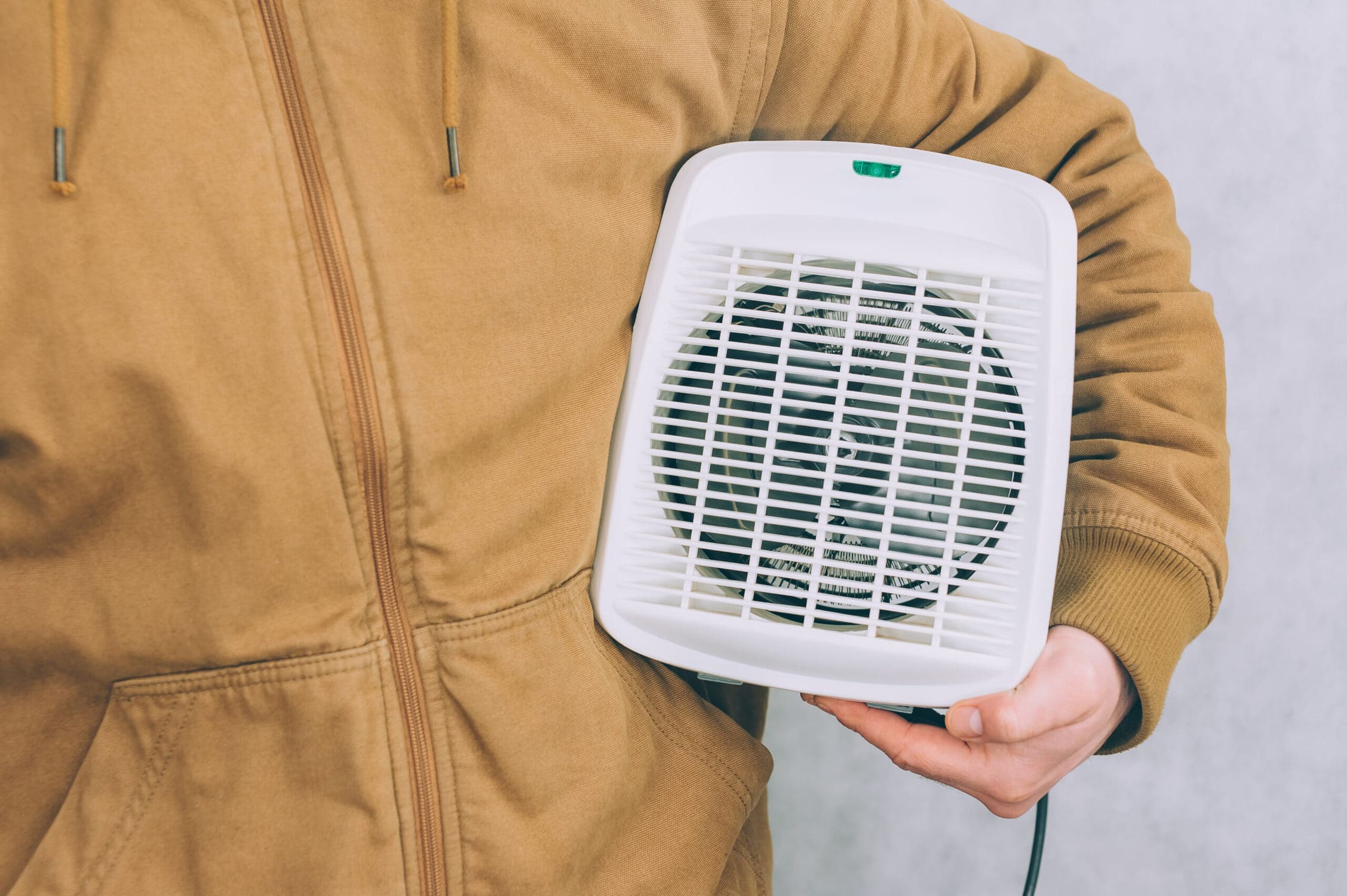
Keeping warm in the winter is vital and for areas where central heat doesn’t reach, you may need some supplemental heat in the form of a space heater.
These units continue to become more energy-efficient and use many types of heating technology to ensure you can easily get heat to any space. There are even options available to heat tents while camping!
Here, we will tell you everything you need to know about space heaters including how to choose one, the types available, and necessary maintenance.

If you’re looking for something specific, use our table of contents to bounce around. Without further ado, we present Space Heaters 101.
Heater Basics
Heaters create ambiance and make us comfortable in our space. We rarely give much thought to what they are and how they manage this though.
What is a Space Heater?
Space heaters are devices which produce heat for the surrounding area but do not attach to ductwork. These devices are portable and can be moved to the specific area where you need heat.
This makes them convenient for spaces without ductwork or as supplemental heating to reduce or enhance the performance of a central heating unit. While these are not suitable for whole-home heating, they are a good solution when a central unit is insufficient or does not reach a certain area.
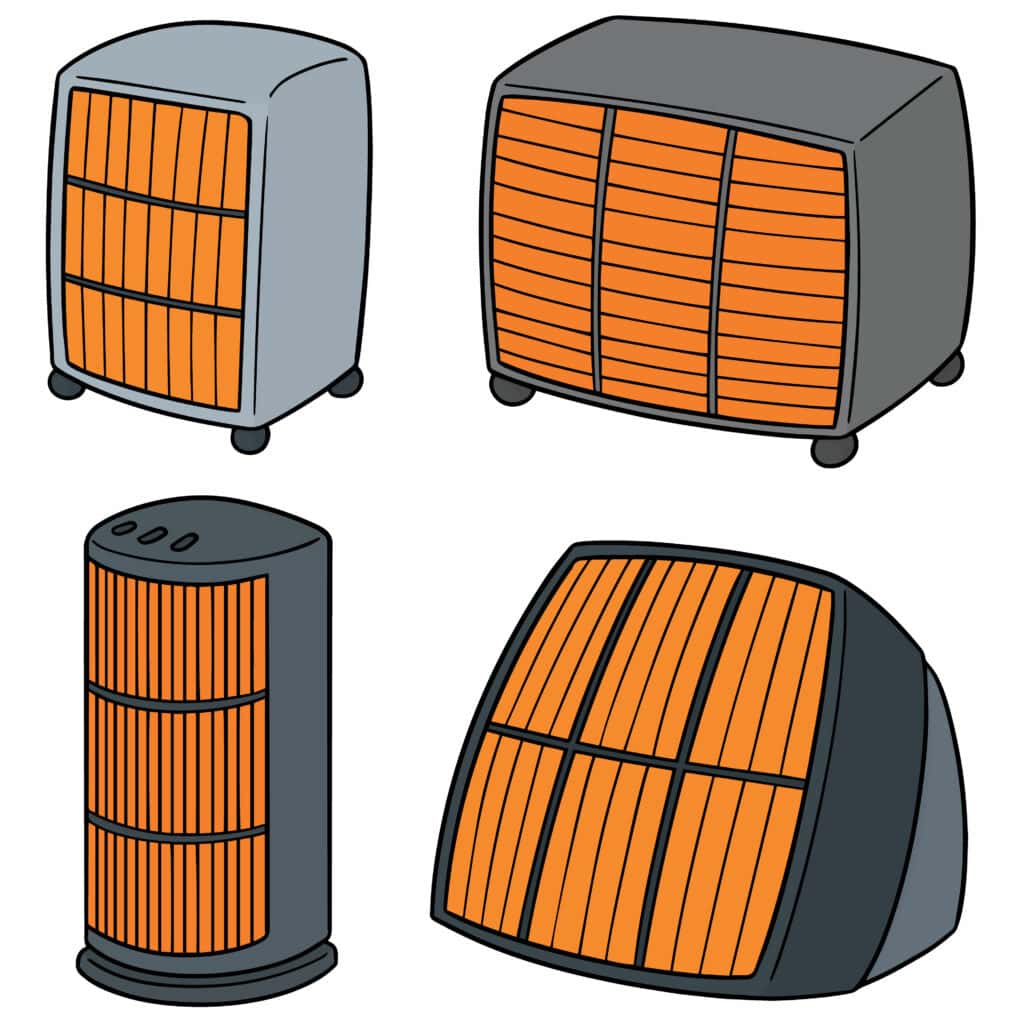
How Does a Heater Work?
A space heater produces heat and distributes it into the surrounding area. This works best in a small to medium sized space and is generally not used for whole-house heating. They do this by producing heat through three main processes.
Convection
In this heating method, ambient air is drawn in and passes over the heating element. The heated air is then pushed back into the surrounding area and a fan then distributes the air into the area. This process continues continuously until the target temperature is reached. This method can slowly heat a larger space.
Infrared
Infrared or radiant heaters radiate heat produced by the unit. This happens through hydronic (water), electricity, gas, or oil processes. These do not draw in air but rely on the rising heat to spread throughout the room and heat. The process is accomplished by electric elements or tubing that conduct the heat produced and allow it to radiate into the space.
Radiant heaters provide directional heat that can be felt immediately and are best for providing targeted heat and covering a smaller area.
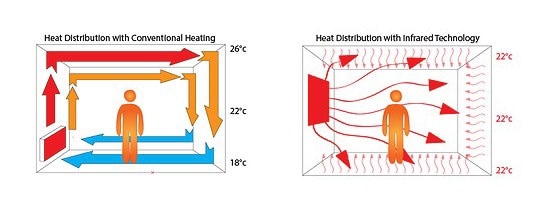
Gas
Gas space heaters are often used when electricity is not available. These use the oxygen in the air to cause combustion, which produces heat. However, combustion (burning of the gas) emits carbon monoxide fumes which can be dangerous. This type can heat the surrounding area quickly but generally needs to be used in a well-ventilated space. The gases used are usually propane or kerosene.
There are also units that combine these with one another (as in micathermic heating) or use another source (such as solar power), or wood-burning to optimize the heater’s operation.
Types of Space Heaters
As mentioned, there are three main types of heating processes which come in various forms.
Ceramic Heaters
Ceramic heaters use electricity to heat ceramic plates. These can use a convection process that then disburses heat through the use of a fan or can instead radiate the heat directly out without the necessity of a fan.
Electric (Fan) Heaters
In this type, coils are heated by electricity. Air is drawn in and warmed, then expelled into the air through the use of a fan.

Infrared Space Heaters
These use infrared rays instead of a heating element to produce heat. This heat then radiates into the room. Some heaters even look like real fireplaces and can also include the use of a fan.
Oil Filled Heaters
These contain diathermic oil sealed within the unit. Electricity heats the oil which circulates and radiates the heat into the surrounding area. These do not have fans attached.
Propane Space Heaters
Propane space heaters use liquid propane which burns and quickly produces an abundance of heat. These produce the hottest heat and radiate it into a designated space. However, since these burn fuel, they produce carbon dioxide and must be vented.
Panel/Micathermic Space Heaters
These are a newer type of heater and can be mounted on a wall. These panels use electricity to produce a steady, radiant heat much like oil filled heaters but operate similarly to a convection heater using a combined process.
Read Before Buying
If you’re in the market for a space heater, you’ll first need to decide which type will work best for your space. Knowing what you are looking for will make the search easier and ensure you are satisfied with the unit you select.
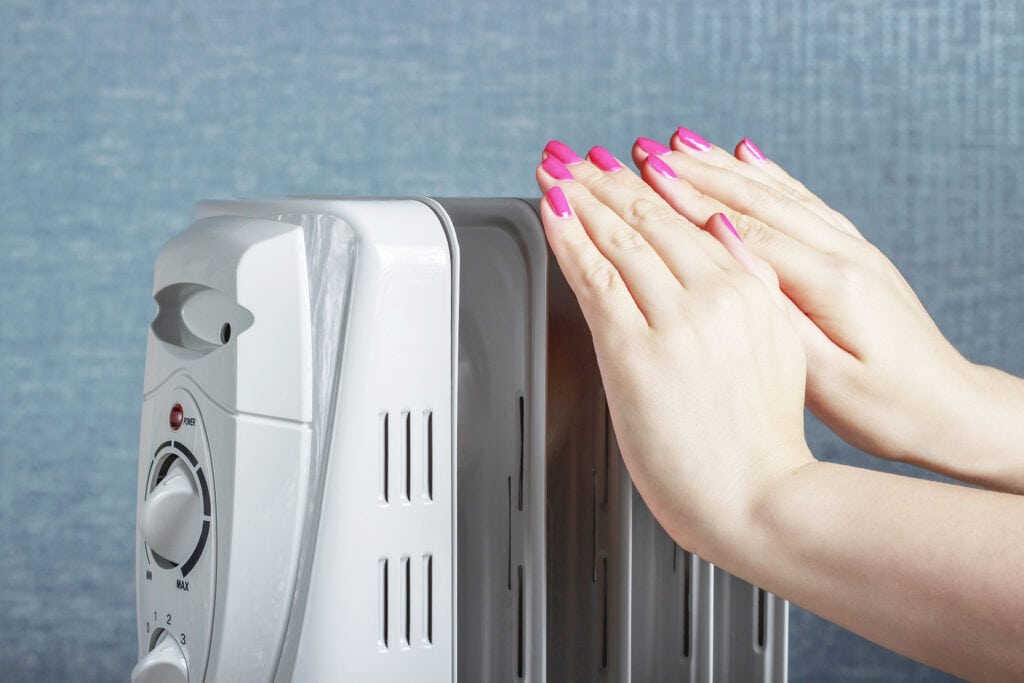
What Size of Heater Do I Need?
Can any heater be used in any space? Well, yes and no. Yes, it can be used but a wrongly sized unit will never be able to keep up with the demand. A too-large unit will consume more electricity and waste energy while a too-small unit won’t produce a sufficient amount of heat.
Here’s how to decide what size you need.
The overall recommendation is 10 Watts for every square foot of space. The trick here is, you are not just heating the floor. You also have to consider the height of your ceiling. Therefore, you’ll need the total cubic footage when sizing. To find this, multiply the width x length x height of the space you wish to heat.
The amount of insulation, (or lack thereof) can affect the size of space heater you need. Well-insulated spaces need less wattage, around 7.5 watts per square foot while poorly insulated spaces require about 12 watts.
Heater sizes are often expressed in BTUs or British Thermal Units.This tells you how powerful the unit is. BTU is the amount of energy needed to raise or lower the temperature of a pound of water by 1℉. Here is a helpful calculator to give you an estimate of what size you need.
Calculating Wattage for Space Heaters
Here’s a helpful graphic to help you figure out what size space heater you need.
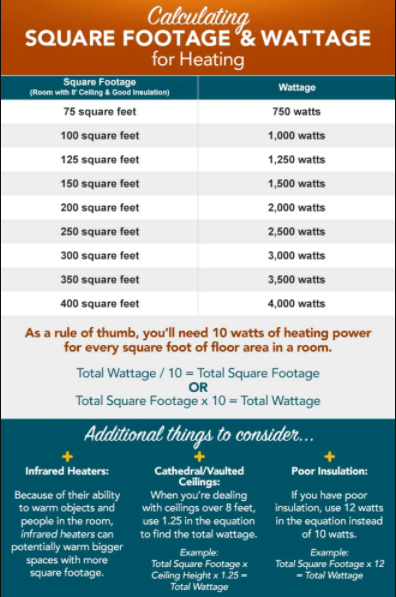
How to Choose a Space Heater
The size of a unit is the most important factor to start with, however, there are other considerations to take into account when looking to add a space heater to your home.
Type
Deciding on the type of heater is important. Consider the speed at which you will need heat, the space you are hoping to heat, and the method the heater uses.
Energy Efficiency
The amount of energy your new space heater will use will affect your electric bill regularly, so you need to consider how efficient a unit is before purchasing.
Safety Features
Safety is always a top priority when purchasing anything. Space heaters come with a degree of risk since they produce heat. Tip-over protection, auto-shutoff, protective grills, and temperature control are great features to look for. If you have children in the home, having a safe space heater is even more significant.
Noise Level
While the noise of a space heater can be mitigated, you don’t want to end up with a unit that interferes with your sleep or activities such as talking or watching television. Consider where you plan to use it in comparison to the amount of noise the unit makes.
Top Heater Brands
Many brands manufacture space heaters and while all try to adhere to top quality standards, some stand out above the rest. Here are some of the most popular and highest rated brands for space heaters.


Heater Maintenance Tips
Space heaters are relatively low maintenance. Since they are a single unit, and do not use any kind of filter, there is not a lot required to care for them.
Here is some information on keeping your heater operational for a long time.
Common Heater Issues
Here are some common problems that can come up in a space heater.
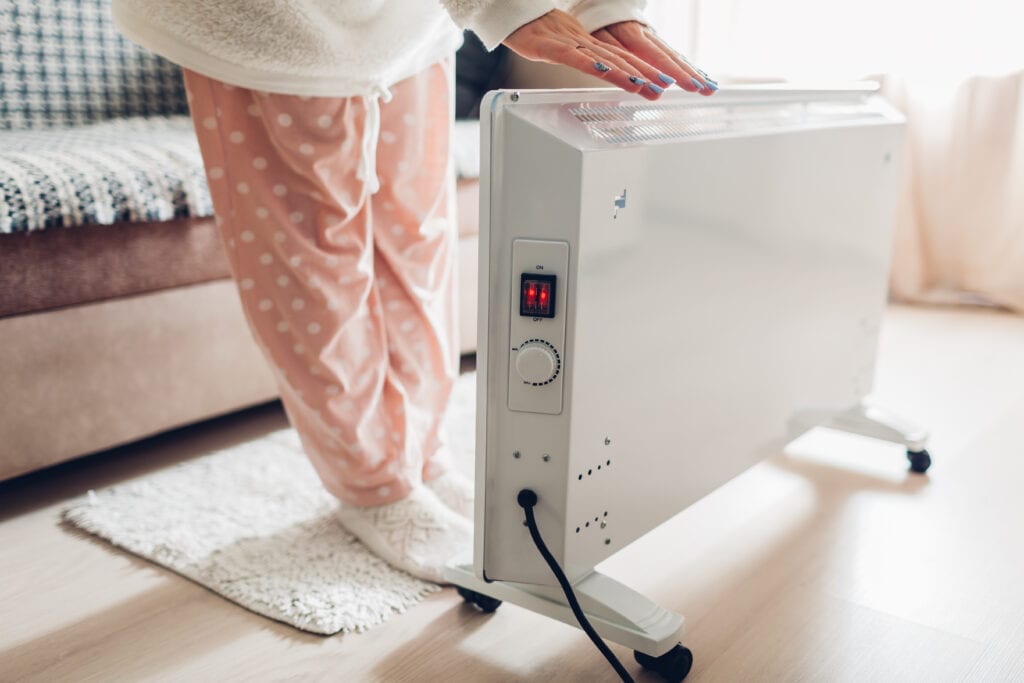
Space Heater Keeps Shutting Off
A common safety feature in space heaters is a unit that automatically shuts off when overheated. This can be caused by restricted airflow (by dust and dirt clogging air intake/heating element, or other objects too close to the unit), thermostat being set too low, or a malfunctioning heating element.
Space Heater Fan Not Working
If your fan is not working, it’s possible the fan motor could have gotten gunked up with dust from the air. Loose or damaged wiring can also prevent the fan from operating.
Electric Heater Won’t Turn On
Another safety feature is that if the unit has been flipped over, it won’t work for a specific period of time. This can also be caused by a tripped circuit breaker, broken outlet, or faulty power cord.
Heater Troubleshooting
If you are experiencing problems with your space heater, it can be frustrating. So what can you do? The first thing to try is to see if there is a reset button. If so, press the reset and see if that fixes your issue.
If not, here are some troubleshooting steps you can take.
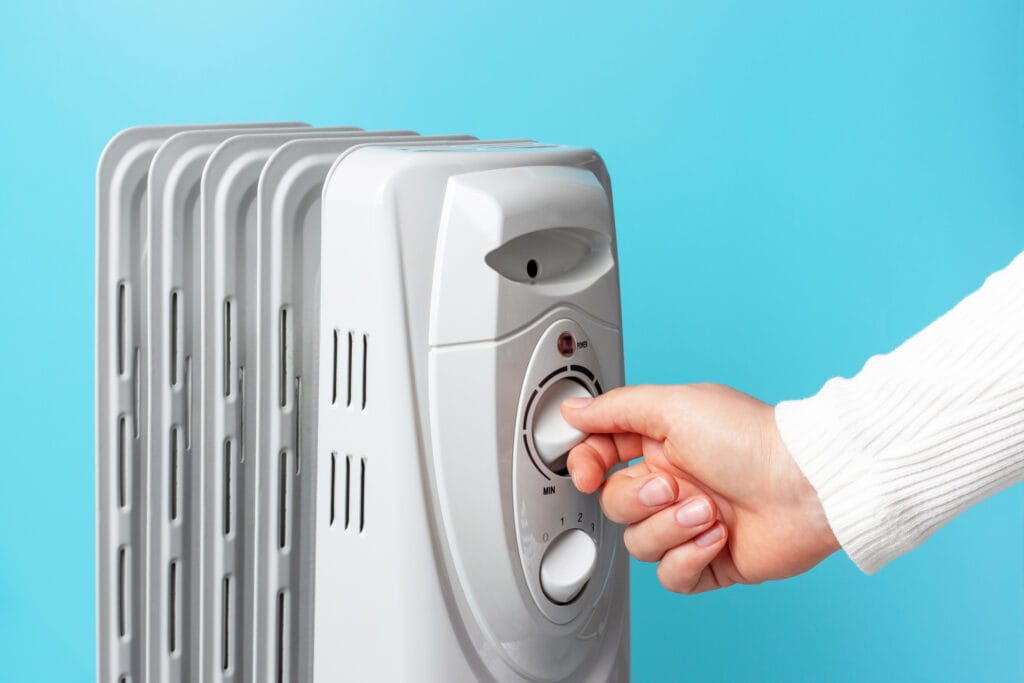
1. First, unplug the unit and allow it to cool completely.
2. Next, examine the external components for damage, dust, dirt, frayed or damaged cord.
3. Check the power source for a tripped circuit breaker or faulty outlet.
4. Verify that the thermostat is set properly. If too low, the unit may not power on or operate.
5. Look for any blown fuses that can be replaced.
6. Consider the auto safety shutoff. This is a feature that prevents the unit from operating if it became overheated or was tipped over. Allow unit to sit for 1 hour and then try again.
If none of these solved the problem, proceed to the next step:
7. If you are comfortable digging deeper, you can begin disassembling the heater. Take care not to damage the heating element or open any sealed components (like in an oil-filled heater). These things can cause irreparable damage.
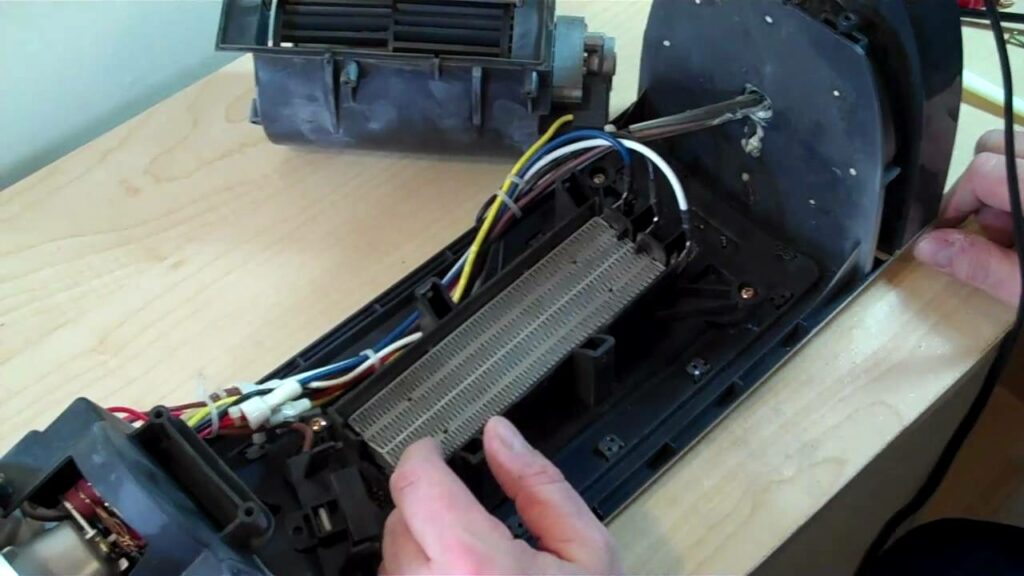
8. Clean off any dirt and debris you encounter.
9. Carefully check wiring for any loose connections.
10. Test heating element with a multimeter. High resistance means the element is operating properly. Low resistance or an infinity reading indicates there is an issue.
After following these steps, if the unit is still not operational, you either need to take it to a repair shop or replace the unit entirely.
Check out the video below for a visual guide.
How to Install a Heater
Installing a space heater is a simple process. Most portable units just require an open space with a minimum clearance of 3 feet on all sides and a power outlet.
Determine the optimal space for your heater. This should be near enough that occupants can enjoy the warmth quickly and needs to be close to an outlet.
Keep all furniture, rugs, toys, blankets and other objects away from the heater. All units produce heat and present a fire risk.
Plug in the unit and set the thermostat.
Note: Never plug a space heater into an extension cord. This increases the risk of a fire. Always plug space heaters directly into a wall outlet.
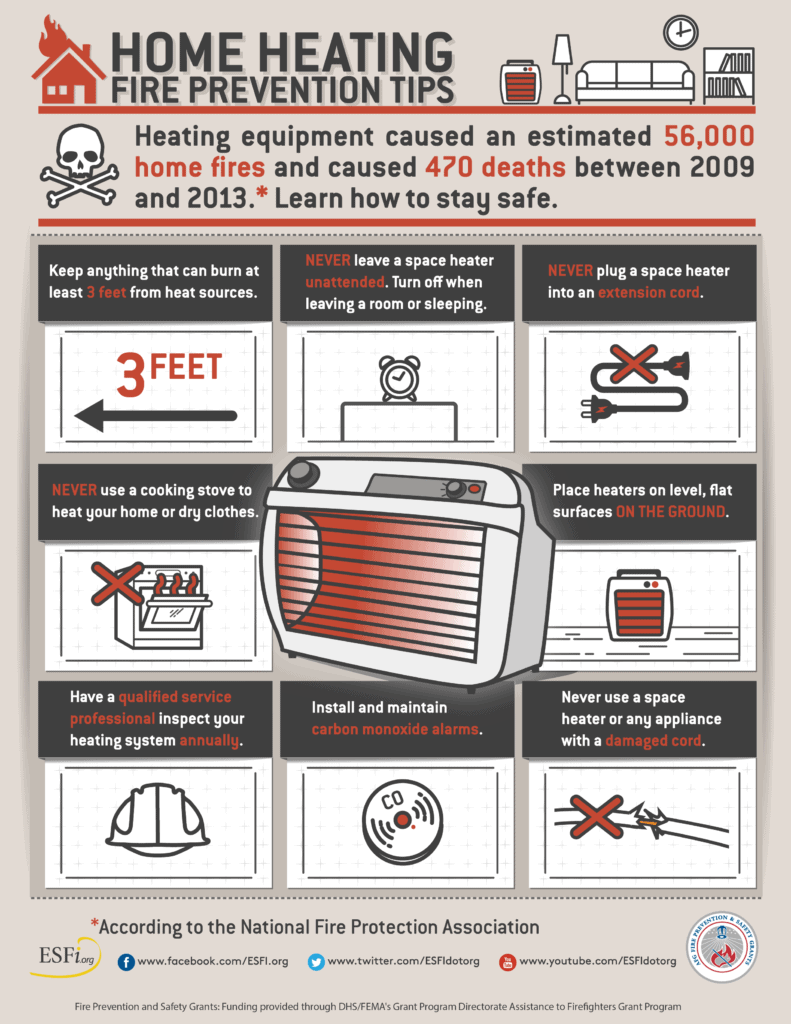
Some units are wall mounted (like many micathermic models) and may require installation.
1. First, select a location near the area to be heated. Ensure plenty of open space around to allow air to circulate.
2. Next cut an appropriate sized hole near a wall stud.
3. Locate the necessary electrical wiring.
4. Install the housing box into the wall and secure.
5. Test and connect wiring.
6. Secure the unit in the wall.
Please refer to the video below for a visual guide to wall-mount installation.
How to Clean a Heater
These units are self contained although they tend to get dusty and dirty from circulating the air. Here is how to keep your space heater clean and operational.
Unplug and allow the heater to cool completely.
Locate and remove screws.
Carefully lift off the outer casing. Be sure not to pull or disconnect any wiring.
Use a soft brush and a vacuum attachment to loosen and remove any dust and dirt buildup. Wipe down visible surfaces with a dry cloth.

Use a spatula wrapped in a paper towel to clean between tubes (if present).
If the reflective plate in a radiant heater is dusty, remove the screws and clean the plate. The reflective coating is essential to effective operation.
Reattach the outer casing and secure with screws.
Wipe down the outside of the unit.
Be sure all parts are attached and it is ready for use.
How Often Should I Clean a Heater?
A space heater should be dusted regularly during normal household cleaning when in use.
If moving the unit to another location, you should clean before relocating to prevent dust and dirt from being dislodged and interfering with the unit’s operation.
A full disassembly cleaning should be done before using the unit for the first time each season to ensure the most efficient operation.
Keeping your unit clean will ensure it operates optimally for years to come.
When is it Time to Replace My Heater?
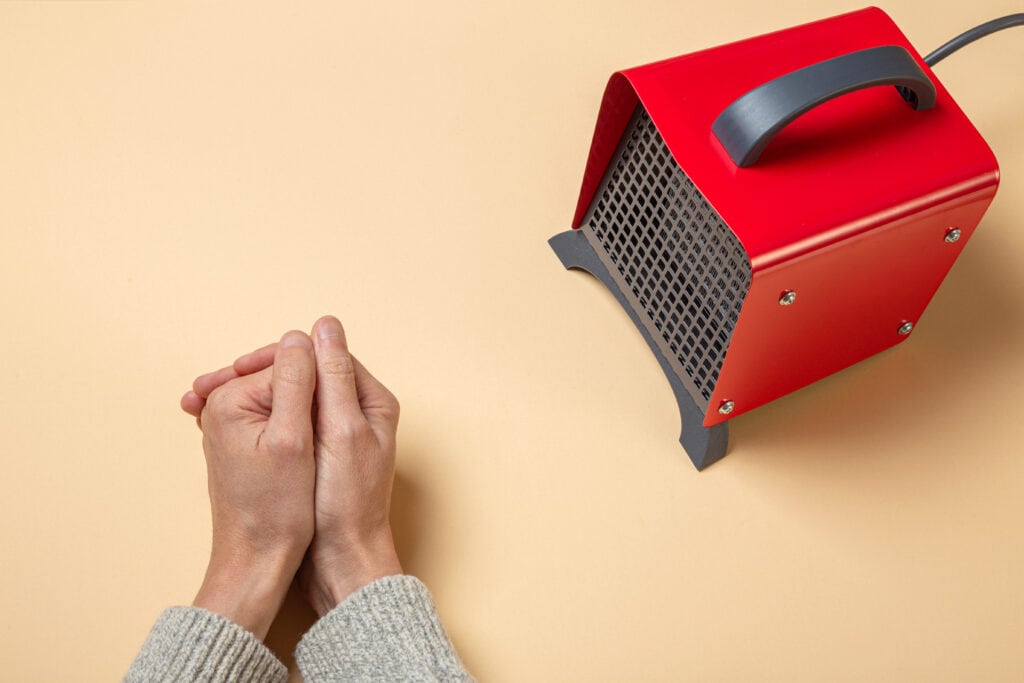
Space heaters can last up to 20 years when used properly. However, they don’t last forever and many units burn out well before their expected lifespan.
Here are some signs it is time to replace your space heater.
The Cord is Damaged
A damaged cord can lead to a fire. While it is possible to replace the cord, it increases the fire risk if done incorrectly.
The Unit is Unexpectedly Hot After Short Periods of Use
Space heaters are responsible for ⅓ of all house fires due to incorrect usage or a damaged unit. If the heater gets hotter than it ever has before, especially after short periods of usage, it is time to get a replacement.
Continued Issues
If your unit is always having problems and you spend more time fixing it than enjoying it, you probably should look into a newer model.
Tripping the Breaker
If you have to reset the breaker regularly, it is a sign that the heater and your electrical are not working together properly.
The Unit is Old
An older unit is likely less efficient and may have trouble achieving the desired temperature. If your unit is older than 10-15 years, you should consider a newer model.
Can You Really Find a Quality Heater That’s Affordable?
Space heaters are relatively inexpensive. This is why they are a viable solution to many when central heating is either unavailable or insufficient. These portable units are very convenient and can move to wherever the occupants are located.

You can find space heaters ranging from $30-$200 depending on the size and type. Those on the higher end will likely have additional features and benefits as well. It is important to determine your needs in order to get a space heater that is perfectly suited to you and your home so you don’t waste your hard-earned money on something that is over or undersized.
By using the information we’ve provided, you will be able to get the right unit for the right price.
Conclusion
Space heaters are an excellent way of adding warmth to your home without having to replace your furnace. They can also reduce your electric bill and provide warmth to areas where no ductwork exists such as garages, basements, tents, and even provide heat for outdoor patios.
Thank you for checking out our heater guide and we hope you found what you are looking for!

HVAC Training 101 is a participant in the Amazon Services LLC Associates Program, an affiliate advertising program designed to provide a means for us to earn fees by linking to Amazon.com and affiliated sites. Pages on this site may include affiliate links to Amazon and its affiliate sites on which the owner of this website will make a referral commission
